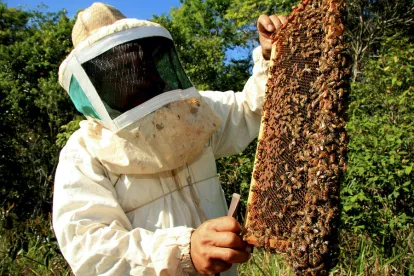A California appellate court recently concluded that the bumble bee is a “fish,” at least for the purposes of certain provisions in the California Endangered Species Act (Cal. ESA). Because bumble bees are “fish,” they can be subject to the Cal. ESA. While this conclusion would be disputed by primary school age children everywhere, this decision – in Almond Alliance of California v. California Fish and Game Commission – illustrates how courts can sometimes reach supportable, but wholly counterintuitive, results.
The case involved whether four bumble bee species could be protected by Cal. ESA. The court found that they could be protected under Cal. ESA because, while “fish” is “colloquially and commonly understood to refer to aquatic species,” the Cal. ESA, uses it as a “term of art” to mean something different than its common usage. Bumble bees are “fish” for two primary reasons:
-
First, the legislative history of the Cal. ESA’s provided clues that the state Legislature intended to protect a broader class of species than just “fish;” and,
-
Second, Cal. ESA as amended in 1984, grandfathered in the Commission’s prior practice of designating other species of invertebrates – including terrestrial mollusks – as threatened, even though the plain language of the relevant provisions of the Cal. ESA did not contain any clear textual hook to do so. Because bumble bees are also non-aquatic invertebrates, the appellate court concluded that the Commission acted appropriately in seeking to protect them – even if it took calling them “fish” to do so.
We briefly discuss these issues in turn.
California’s first Endangered Species Act, passed in 1970, allowed the Commission to protect as “endangered and rare animals,” “an animal of a species of subspecies of birds, mammals, fish, amphibia, or reptiles” meeting specific statutory criteria. When the Cal. ESA was amended in 1984, the California Legislature considered whether to add “invertebrates” to the list of “birds, mammals, fish, amphibians, or reptiles” which could be protected as endangered or threatened species (successor terms to “endangered and rare animals,” which were used in the 1970 Cal. ESA).
The Legislature ultimately elected not to do so, presumably due to a contemporaneous
regulatory analysis by the California Department of Fish and Game and Natural Resources Agency (hereafter, “Fish & Game analysis”) which concluded that the Commission “already had the authority to list invertebrates” under Cal. ESA “and had previously listed three invertebrates as endangered or rare animals.” The Fish & Game analysis specifically noted that pre-existing law granted the Commission the “authority to designate insects [like butterflies] as endangered or threatened.” Specific language grandfathering in past endangered or threatened animal decisions – including those listing terrestrial mollusks as requiring protection – was included in the 1984 Cal. ESA.
The court found the grandfathering language in Cal. ESA to be outcome-determinative. In reviewing the Commission’s listing of bumble bees, the appellate court placed “great weight” on the Fish & Game analysis, as “a contemporaneous construction is likely to reflect the understanding of the Legislature that enacted the statute, which will not be the case with an administrative construction made many years after the fact.” Here, the court noted that the legislative history showed that “the Legislature approved of the Commission’s interpretation that . . . gave it the authority to list a terrestrial species under the definition of fish.” Accordingly, the Commission has the authority to list any invertebrate as an endangered, threatened, or candidate species – so long as it meets other requirements of Cal. ESA.



 />i
/>i

